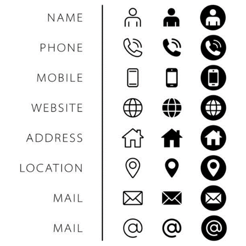The definition of “Asset Management” varies depending on who you are talking to. If you are an operations manager speaking to IT, be sure to clarify what you mean by “asset”:
- Financial Assets (Fintech): Bank accounts, investment accounts, various holdings, and non-physical assets
- Fixed Assets: Assets used for income generation. These generally fall under Property, Plant & Equipment (PP&E)
- IT Assets: Computers, IT equipment, software licenses, networks, and infrastructure
- Digital Assets: A digital asset is any asset in digital format that is owned, contains a right to use, or interest by an individual or organization. These assets differ from IT assets in that IT assets will store, manipulate, and display digital assets. Managing Digital Assets is our focus for today.
In looking at managing your digital assets, consider these three W’s: The “What”, the “Why” and the “Who”:
 What
What
First, understand “what” your digital assets are before you outline how they need to be managed. Many companies, especially those that have grown over time, fail to accurately assess their full inventory of assets. Digital assets include documents, presentations, photos, logos, illustrations, design files, media, spreadsheets, datasets, blogs, emails, websites, social media accounts, and the list goes on. Consider the number of applications you have acquired over the years and what information they each store. Consider, too, that digital assets can become “digital liabilities” if they are misplaced, erased, or accessed by an unauthorized system or persons.
Why
While every organization needs to manage its digital assets to some degree, there may be differences in why they need to do this. Regulatory adherence and audit compliance are two strong reasons to manage your assets, but these often require only a base level of management. Many companies under regulatory control are using Excel spreadsheets or a simple database to document the number of devices and who has access.
 These manual efforts, while they may satisfy an auditor, may cause issues down the road. If your business is growing, consider the scaling impact of more devices, more people, and more data in managing digital assets. An investment in a proper asset management tool may be a worthwhile investment for a business looking to scale. If you are opening in new geographies, new business lines, or facilities, consider the increasing complexities and risks under your current asset management model.
These manual efforts, while they may satisfy an auditor, may cause issues down the road. If your business is growing, consider the scaling impact of more devices, more people, and more data in managing digital assets. An investment in a proper asset management tool may be a worthwhile investment for a business looking to scale. If you are opening in new geographies, new business lines, or facilities, consider the increasing complexities and risks under your current asset management model.
For many businesses, the pressing reason for optimizing digital asset management is security. It’s no secret that digital crime is on the rise and is becoming a driver for changes in both process and technology. The biggest gains concerning security are in real-time monitoring technology and the triggering of actions based on threats or changes to digital access or usage. Time is of the essence in staying ahead on cyber protection.
Who
Historically digital asset management has fallen under HR and IT. HR documents your name and position and sends a request to IT to issue a laptop, and cell phone and set up enterprise software accounts. You are then sent back to HR for training and your devices and accounts are locked to your user ID. From this point, there is generally very little monitoring that occurs.
 Unfortunately, this model is becoming an issue with the increase in remote work as well as an increase in cybercrime. Access, visibility, and real-time response to digital activity are no longer considered state-of-the-art, but rather simple best-practice. As IT and HR have plenty of other responsibilities, any reasonable-sized company should have a Digital Asset Manager (DAM) on their team. The DAM will help to manage and on-board the necessary data management software and related tools and ideally is adjunct to or part of the data security team. For many organizations, these roles can and should be contracted.
Unfortunately, this model is becoming an issue with the increase in remote work as well as an increase in cybercrime. Access, visibility, and real-time response to digital activity are no longer considered state-of-the-art, but rather simple best-practice. As IT and HR have plenty of other responsibilities, any reasonable-sized company should have a Digital Asset Manager (DAM) on their team. The DAM will help to manage and on-board the necessary data management software and related tools and ideally is adjunct to or part of the data security team. For many organizations, these roles can and should be contracted.
In our next post, we will talk about the “How” of digital asset management. It’s a heavy topic, so first focus on the What, Why, and Who, and then we will dig in on action steps towards managing your digital assets.
If you have questions or would like to discuss more, please reach out to info@validdatum.com. We also welcome you to subscribe to receive weekly posts on data management, security, and technology transformation best practices.
Recent posts

30 Jan, 2024


